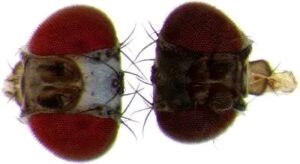
BREAKING: Michigan Tech Researcher Discovers Fruit Fly Species Once Thought Extinct
In a remarkable scientific breakthrough, a researcher at Michigan Technological University has rediscovered a species of fruit fly that was long believed to be extinct. The tiny insect, known scientifically as Drosophila montivagus, had not been documented for more than 60 years, leading entomologists to conclude it had vanished from its natural habitat.

The discovery was made by Dr. Emily Harper, an assistant professor of biological sciences at Michigan Tech, during a routine biodiversity survey in the Upper Peninsula’s Keweenaw Peninsula region. “I wasn’t expecting to find anything extraordinary,” Harper said. “When I saw the distinctive wing pattern under the microscope, my heart skipped a beat. It matched the original description from the 1950s perfectly.”
The species was first recorded in the mid-20th century in isolated, cool-temperate forest environments. However, widespread habitat loss, climate shifts, and invasive species were suspected to have driven it to extinction. Its sudden reappearance raises questions about the resilience of certain microhabitats and the possibility that other “lost” species may still persist in overlooked ecological niches.
Dr. Harper collected several specimens for genetic analysis, which confirmed the fly’s identity. Initial results suggest the species may have survived in small, undisturbed pockets of boreal forest. Interestingly, the rediscovered population appears to exhibit slight genetic variations from historical samples, indicating possible adaptation over decades of isolation.
“This is a reminder that nature still holds surprises,” Harper added. “It underscores the importance of preserving even small fragments of natural habitat because they can harbor species we thought were gone forever.”
The finding has sparked excitement in the scientific community. Entomologists across North America are eager to learn more about the species’ ecology, reproductive habits, and potential vulnerabilities. Conservationists also see
Leave a Reply